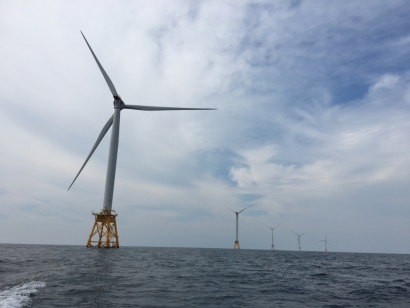
The new analysis, based on the generation capacity outlined in the strategy and expected levels of demand, shows that during more than half of the time across 2030 (53% of the hours in the year), the UK’s electricity grid is expected to have an oversupply of renewable and nuclear power. For comparison, it is expected that in 2022, the UK will experience an oversupply from these sources for just 6% of the hours. This creates valuable opportunities for flexible demand which can utilize excess power but creates risks for renewable generators who may not find a buyer for their power.
In 2030, 72TWh of excess renewable and nuclear energy is expected – equivalent to almost 25% of current demand. Using all this excess would require 50GW of demand-side flexibility from energy storage such as batteries, electrolyzers and interconnectors to enable exporting. Accelerating the growth in demand-side flexibility would reduce the costs of balancing the grid, mitigate falling revenues for renewable generators to reduce subsidies, and help consumers realise wider benefits from renewable power.
LCP estimates a need of an additional 45GW of back-up capacity to provide energy during periods of low renewable output. Expected to fill this gap will be bioenergy, hydrogen and Carbon Capture Usage and Storage (CCUS) enabled power plants. However, over 20GW of this capacity will only be required in fewer than 5% of hours.
Commenting on the findings, Chris Matson, Partner at LCP said, “The energy strategy received the headlines for ambitious and laudable energy generation targets but a closer look reveals the significant challenge of building a decarbonized future energy mix that delivers value for consumers and ensures security of supply. For more than half the time in 2030 the UK’s renewable and nuclear backed energy system will be producing more energy from renewables and nuclear than it uses. Simply wasting this generation would harm both consumers and investors so a whole system approach is essential to minimise the cost of delivering Net Zero.
“To tackle this significant oversupply, the UK needs to accelerate the delivery of demand-side flexibility to capture this spare energy and ensure it doesn’t go to waste. This can be through fast-growing technologies such as battery storage, longer-term storage such as pumped hydro, as well as the electrolyzers to produce hydrogen for use in other energy market such as heating. Additionally, the UK could see itself become a significant exporter of energy, though much of this depends on the rate of decarbonization in Europe.”
“The need for significant amounts of flexibility and back-up power shows the scale of investment needed in order to deliver the Government’s ambition to achieve 95% decarbonization of the power sector by 2030. Without a concerted program of policy and regulatory reform to unlock this investment on a range of supporting technologies, there is a risk that the strategy will fail to cut bills in the long-term, and actually puts them up.”
Energy strategy heightens need for diversified approach to infrastructure investment
Commenting on the approach that investors should consider, Rajiv Gogna, Partner at LCP said, “The investment opportunity from the transition to Net Zero is clear, however, it does not come without risk. While set to lead the way, renewables are exposed to changes in the regulatory environment alongside other market factors. As our analysis suggests, focusing solely on renewable generation could mean that investors see many of their assets turned off for periods and not earning revenue.
“However, a diversified approach that looks for more ‘value-add’ and opportunistic approaches to infrastructure investment can balance this risk by exploring less well-established technologies such as batteries which would sit well against generation assets.”

